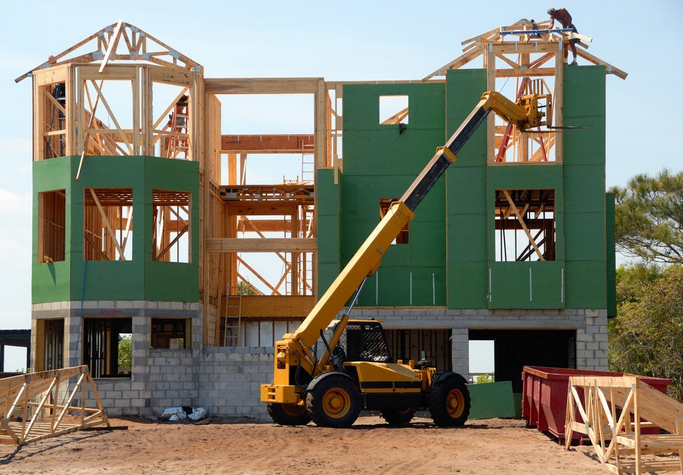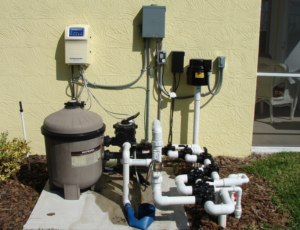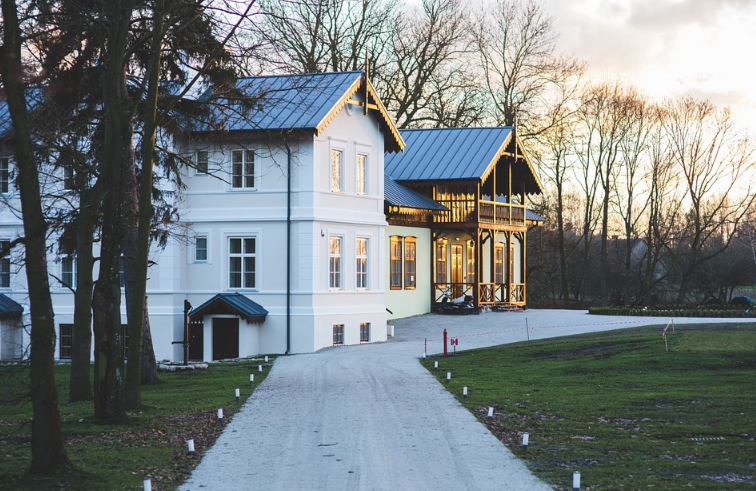The industrial property market is buzzing with activity, and you might be wondering if now is the right time to dive in. With seismic shifts reshaping how we do business, opportunities are emerging faster than ever before. But should you really invest in industrial property? How can you make sure you’re getting the best? Visit Currie Group’s Official Website to find the answer.
Whether you’re a seasoned investor or contemplating your first venture, understanding current trends can make all the difference. From the rise of e-commerce to changing logistics demands, let’s explore why this moment might just be tailored for those looking to invest in industrial properties.
Growing Last-Mile Delivery Needs
As consumers demand faster delivery times, last-mile solutions have become crucial for retailers and distributors. This shift requires innovative strategies to meet consumer expectations efficiently. Companies are now investing heavily in urban distribution centers designed specifically for rapid fulfillment. Businesses are rethinking their warehousing choices to ensure they can provide quick service while minimizing costs. Real estate investors are taking note of these developments. Properties that cater to last-mile delivery needs may hold significant potential for growth as e-commerce continues its upward trajectory.
Reshoring of Manufacturing

The reshoring of manufacturing has gained significant momentum in recent years. Companies are re-evaluating their supply chains, seeking to bring production closer to home. This shift is driven by various factors, including rising labor costs overseas and the need for greater control over quality. Tenants want more agility in response to market demands. Additionally, geopolitical tensions have made reliance on foreign manufacturing less appealing. Investors should watch this trend closely as it can influence the demand for industrial properties. Facilities that support local manufacturing are becoming increasingly valuable.
Vacancy Rates and Rental Growth
Vacancy rates in industrial properties have been trending downward, signaling a robust demand. As e-commerce and logistics companies expand their footprint, the need for warehouse space has surged. This trend is especially noticeable in urban centers where proximity to customers is key. The competition among businesses for available spaces drives rental prices higher. Landlords are capitalizing on this momentum by raising rents, often outpacing inflation rates. Investors looking at these metrics see potential for strong returns. Moreover, previously considered less desirable areas are now being transformed due to infrastructure improvements and increased connectivity. This shift further reduces vacancy levels and boosts rental growth prospects.

Interest Rates and Property Financing Options
As they fluctuate, so do the options available for financing your investment. With current trends indicating a possible stabilization after recent hikes, investors may find favorable borrowing conditions. Lenders are adapting their products to meet evolving market demands. Traditional bank loans remain popular, but alternative financing solutions are gaining traction. For those looking to capitalize on this moment, understanding your financial landscape is essential. Conduct thorough research on interest rates and assess different lenders’ offerings. It’s also wise to evaluate long-term versus short-term financing strategies. Each option carries risks and benefits that can impact overall returns significantly.
With all these factors considered, now could be an opportune moment to delve into the industrial real estate sector. Those who act strategically may uncover valuable assets capable of yielding substantial returns as industry demands evolve further.…














 One of the best ways to avoid accidents in your home is to reduce clutter. Clutter can be a tripping hazard and make it difficult to find things when you need them. When you have less clutter, you’ll be less likely to trip and fall, and you’ll be able to find things more easily. One way many people store this clutter is by considering storage solutions.
One of the best ways to avoid accidents in your home is to reduce clutter. Clutter can be a tripping hazard and make it difficult to find things when you need them. When you have less clutter, you’ll be less likely to trip and fall, and you’ll be able to find things more easily. One way many people store this clutter is by considering storage solutions. Lastly, you can also create a safe environment in your home by childproofing it. If you have young children, make sure to put away any potential hazards, such as medications, cleaning supplies, and sharp objects. You can also install safety devices, such as smoke detectors and carbon monoxide detectors. Taking these precautions can help keep your family safe from accidents. This way, you can have some peace of mind knowing that your home is a safe place for everyone. This is even when you’re away or at work.
Lastly, you can also create a safe environment in your home by childproofing it. If you have young children, make sure to put away any potential hazards, such as medications, cleaning supplies, and sharp objects. You can also install safety devices, such as smoke detectors and carbon monoxide detectors. Taking these precautions can help keep your family safe from accidents. This way, you can have some peace of mind knowing that your home is a safe place for everyone. This is even when you’re away or at work.
 Another reason to work with
Another reason to work with  When you work with professionals on home projects, you can be confident that you’ll get the best results. If you try to do the task yourself, there’s always a risk that it won’t turn out the way you wanted. Hiring a professional can help ensure that your project turns out exactly as planned, which can give you a lot of peace of mind.
When you work with professionals on home projects, you can be confident that you’ll get the best results. If you try to do the task yourself, there’s always a risk that it won’t turn out the way you wanted. Hiring a professional can help ensure that your project turns out exactly as planned, which can give you a lot of peace of mind.
 If you suffer from back pain, neck pain, or any other type of pain that makes it difficult to sleep comfortably, an adjustable bed can be a game-changer. You can adjust the head and foot of the bed to find the perfect position for your body, which can help alleviate pain and improve your quality of sleep. But, one thing’s for sure is that you’ll need to find a way to make your adjustable bed look stylish. Luckily, there are plenty of ways to do that. You can purchase an adjustable bed frame and then use a mattress cover or duvet cover to add style and color to the bed. You can also add some throw pillows for extra comfort and style.
If you suffer from back pain, neck pain, or any other type of pain that makes it difficult to sleep comfortably, an adjustable bed can be a game-changer. You can adjust the head and foot of the bed to find the perfect position for your body, which can help alleviate pain and improve your quality of sleep. But, one thing’s for sure is that you’ll need to find a way to make your adjustable bed look stylish. Luckily, there are plenty of ways to do that. You can purchase an adjustable bed frame and then use a mattress cover or duvet cover to add style and color to the bed. You can also add some throw pillows for extra comfort and style.
 First of all, you need to know how your office is currently laid out. This will help you to figure out what needs to be changed. Once you know what needs to be done, it will be much easier to pick a new layout.
First of all, you need to know how your office is currently laid out. This will help you to figure out what needs to be changed. Once you know what needs to be done, it will be much easier to pick a new layout. These are just a few tips on how to redecorate your
These are just a few tips on how to redecorate your 
 One of the most critical factors in determining whether a paving company will do a quality job is the type and quality of materials they use. A good paving company will have high-quality equipment and materials to ensure a smooth, long-lasting surface. Homeowners should ask the paving company what kind of equipment they use. If they cannot answer, or if their answers are vague, this is not a good sign. Most reputable companies will tell homeowners exactly what kinds of materials and equipment they use for asphalt pavements (and concrete pavements as well). Ask the paving company about the types of materials they plan to use on your driveway or parking lot.
One of the most critical factors in determining whether a paving company will do a quality job is the type and quality of materials they use. A good paving company will have high-quality equipment and materials to ensure a smooth, long-lasting surface. Homeowners should ask the paving company what kind of equipment they use. If they cannot answer, or if their answers are vague, this is not a good sign. Most reputable companies will tell homeowners exactly what kinds of materials and equipment they use for asphalt pavements (and concrete pavements as well). Ask the paving company about the types of materials they plan to use on your driveway or parking lot.
 It might be hard for some people to get rid of old memories from their homes, no matter how outdated they are. For example, you have a senior entertainment center that doesn’t work anymore.
It might be hard for some people to get rid of old memories from their homes, no matter how outdated they are. For example, you have a senior entertainment center that doesn’t work anymore. After 15 years, you deserve some time off from thinking about anything besides what Netflix shows to binge-watch next. You don’t have to worry about a thing when it comes to remodeling your house! Norsemen will take care of everything for you, from the design process to the execution and even the cleanup. All you need is a little patience while they work their magic!
After 15 years, you deserve some time off from thinking about anything besides what Netflix shows to binge-watch next. You don’t have to worry about a thing when it comes to remodeling your house! Norsemen will take care of everything for you, from the design process to the execution and even the cleanup. All you need is a little patience while they work their magic!
 Did you know that the EPA has set standards for lead exposure, but they do not apply to drink water? Drinking water is considered safe if it contains less than 15 parts per billion (ppb) of lead. The problem with this standard is that no amount of exposure to lead is safe, and ingesting small amounts over time can cause serious health problems.
Did you know that the EPA has set standards for lead exposure, but they do not apply to drink water? Drinking water is considered safe if it contains less than 15 parts per billion (ppb) of lead. The problem with this standard is that no amount of exposure to lead is safe, and ingesting small amounts over time can cause serious health problems. Aside from practical and health benefits, a whole house water filter can also provide economic benefits as it can reduce your monthly utility bills. As mentioned, it can produce safer and healthier drinking water, so there is no need to buy bottled water anymore. This way, you can reduce your monthly expense and even save the planet.
Aside from practical and health benefits, a whole house water filter can also provide economic benefits as it can reduce your monthly utility bills. As mentioned, it can produce safer and healthier drinking water, so there is no need to buy bottled water anymore. This way, you can reduce your monthly expense and even save the planet.

 There is no one brand of water purifier that will work best for everyone. Different brands are best for different situations, as water quality, contaminant clearance, and cost of electricity can vary between buyers. Find out what real-life customers have to say about the product. You can get a clear picture of the product’s quality from your friends and neighbors who have used it.
There is no one brand of water purifier that will work best for everyone. Different brands are best for different situations, as water quality, contaminant clearance, and cost of electricity can vary between buyers. Find out what real-life customers have to say about the product. You can get a clear picture of the product’s quality from your friends and neighbors who have used it.
 It is essential to set up your home office in a quiet place to concentrate when working at home. Unless you live alone, you probably have areas in your home where you cannot be disturbed easily. A quiet spot reserve for working is an integral part of working remotely. However, if you have more companies under your roof, your room or basement is a great alternative, though you need to consider some modifications.
It is essential to set up your home office in a quiet place to concentrate when working at home. Unless you live alone, you probably have areas in your home where you cannot be disturbed easily. A quiet spot reserve for working is an integral part of working remotely. However, if you have more companies under your roof, your room or basement is a great alternative, though you need to consider some modifications. Changing your home office paint color can be one of the largest and most significant ways to change the feel of your home office and boost your mood and productivity. The psychological effect of colors can be profound, and it can make the difference between being productive or feeling sleepy every time you sit down at your computer. Colors trigger different emotions and physical reactions, so choose wisely.
Changing your home office paint color can be one of the largest and most significant ways to change the feel of your home office and boost your mood and productivity. The psychological effect of colors can be profound, and it can make the difference between being productive or feeling sleepy every time you sit down at your computer. Colors trigger different emotions and physical reactions, so choose wisely. Studies have proven that lighting can increase or impact productivity. It’s a good idea to set up your home office in an area that has natural light. It will help you feel more active, energetic, and motivated. Natural light can also be beneficial to your overall health and well-being. It helps you maintain your vitamin D levels. It is an essential nutrient that can improve the quality of your sleep and keep you happy.
Studies have proven that lighting can increase or impact productivity. It’s a good idea to set up your home office in an area that has natural light. It will help you feel more active, energetic, and motivated. Natural light can also be beneficial to your overall health and well-being. It helps you maintain your vitamin D levels. It is an essential nutrient that can improve the quality of your sleep and keep you happy.

 Possessing the expected capacity, experience, and expertise is vital for roofing solution providers to ensure they can handle such a large job. And to accomplish this, all commendable roofing contractors have to have a professional staff, for example, architects, contractors, and architects, supervisors, along with well-trained workers. Also, the area you employ should be equipped with innovative types of tools and machines that are needed to perform the roofing job. All products should be branded materials and also include a warranty.…
Possessing the expected capacity, experience, and expertise is vital for roofing solution providers to ensure they can handle such a large job. And to accomplish this, all commendable roofing contractors have to have a professional staff, for example, architects, contractors, and architects, supervisors, along with well-trained workers. Also, the area you employ should be equipped with innovative types of tools and machines that are needed to perform the roofing job. All products should be branded materials and also include a warranty.…

 Transmission occurs through liquid droplets that are produced when you cough or cough on someone. The droplets produced by coughing or expectorating can remain in the air for a long time. If you do not keep your distance, you can inhale the virus as soon as the person sneezing near you is affected. People could be wondering why they need to practice this method. The best answer is to minimize the risk as small as possible if their family members still need to go out daily. Therefore, people should consider performing this at home.
Transmission occurs through liquid droplets that are produced when you cough or cough on someone. The droplets produced by coughing or expectorating can remain in the air for a long time. If you do not keep your distance, you can inhale the virus as soon as the person sneezing near you is affected. People could be wondering why they need to practice this method. The best answer is to minimize the risk as small as possible if their family members still need to go out daily. Therefore, people should consider performing this at home. Scientists have done the research and said that the virus could stay on the phone 2 or 3 times. We also need to wash the devices to reduce the spread of the coronavirus. It could remove the virus that might leave on the stuff. Besides, this way also should be encountered when you are purchasing something online. Therefore, you can ensure that the items are clean and virus-free.…
Scientists have done the research and said that the virus could stay on the phone 2 or 3 times. We also need to wash the devices to reduce the spread of the coronavirus. It could remove the virus that might leave on the stuff. Besides, this way also should be encountered when you are purchasing something online. Therefore, you can ensure that the items are clean and virus-free.…



 Your comfortable and elegant pieces of furniture are just surrounded by clear, uncluttered space. Rooms will only include furniture. Since your flooring is free of clutter, it’s far simpler to both vacuum clean, and dust. You do not need to move a lot of things before you can clean them. Eliminating all clutter and storing the vast majority of necessary items from sight will make them simple to find when required within their very own allotted area.
Your comfortable and elegant pieces of furniture are just surrounded by clear, uncluttered space. Rooms will only include furniture. Since your flooring is free of clutter, it’s far simpler to both vacuum clean, and dust. You do not need to move a lot of things before you can clean them. Eliminating all clutter and storing the vast majority of necessary items from sight will make them simple to find when required within their very own allotted area.
 When it’s hot outside, the central air conditioner fills the house with a cold and refreshing atmosphere. The best way to make the central air conditioner work quickly and
When it’s hot outside, the central air conditioner fills the house with a cold and refreshing atmosphere. The best way to make the central air conditioner work quickly and  It would be best to block the sun with your curtains during the day in that way, and it helps to reduce the usage of air conditioning because the heat of the sun will not make the room warmer. During the hours when the sun shines brightly, the curtains or blinds should be closed. This way, the temperature inside the house will not increase so much.
It would be best to block the sun with your curtains during the day in that way, and it helps to reduce the usage of air conditioning because the heat of the sun will not make the room warmer. During the hours when the sun shines brightly, the curtains or blinds should be closed. This way, the temperature inside the house will not increase so much.
 Water softeners will help you filter your water and remove a variety of impurities from it. This usually means that these substances do not end up on your skin when you are in the shower. This is true; you can create a better foam with your soap and feel cleaner after showering. With a spoonful of soap, you will feel cleaner, and your showers will be more pleasant. This is why many people opt to using water softeners in their homes.
Water softeners will help you filter your water and remove a variety of impurities from it. This usually means that these substances do not end up on your skin when you are in the shower. This is true; you can create a better foam with your soap and feel cleaner after showering. With a spoonful of soap, you will feel cleaner, and your showers will be more pleasant. This is why many people opt to using water softeners in their homes. Finally, water softeners can also allow you to keep the pipes in your home clean. Often a house without a device will have connections like calcium in the water. These compounds then flow through the pipes and can leave a residue. These deposits eventually build-up, making the pipes more vulnerable to clogging or rupture in acute cases. A water softener can allow you to keep your pipes clean, useful for your sanitation facilities’ long-term well-being.…
Finally, water softeners can also allow you to keep the pipes in your home clean. Often a house without a device will have connections like calcium in the water. These compounds then flow through the pipes and can leave a residue. These deposits eventually build-up, making the pipes more vulnerable to clogging or rupture in acute cases. A water softener can allow you to keep your pipes clean, useful for your sanitation facilities’ long-term well-being.…